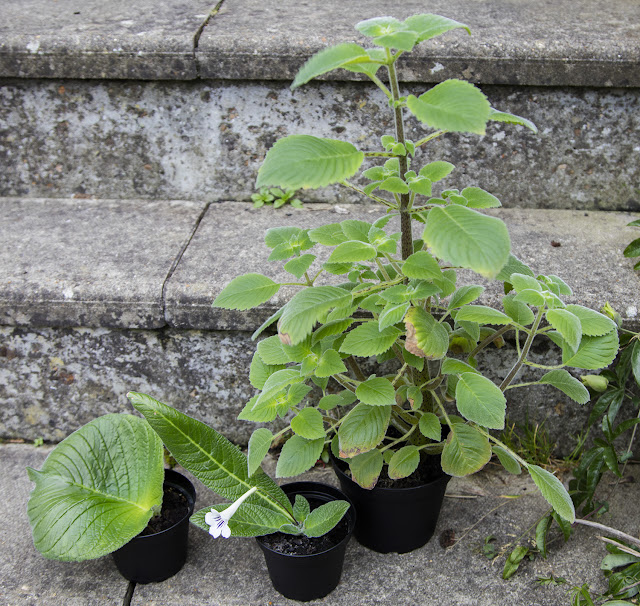 |
| Three Streptocarpus species grown from seed. Hayes, 17 October 2015. |
The original species are not so showy, and there is an unusual variety of forms. Here are three. On the right is Streptocarpus thompsonii (I'm pretty sure), which is said to grow up to a meter tall, so it will be hard to find room for it. It looks like a conventional plant of shrubby form with thick succulent stems. No flowers as yet.
In the centre is a Streptocarpus rexii, which looks very much like all the hybrids you can buy, but with fewer flowers. (Just one for now, but there are more buds.) The flowers are quite lovely.
 |
| Flower of Streptocarpus rexii grown from seed. Hayes, 17 October 2015. |
On the left is a species I have not yet identified, but it is one of a group that only ever have a single leaf. This is most unusual for any plant! But there are several in the family Gesneriaceae, to which both Streptocarpus (aka Cape Primrose) and Saintpaulias (aka African Violet, another easy house plant) belong. What is more, the leaf that develops is a cotyledon, sometimes called a seed leaf, which develops directly from the embryo contained in the seed. Almost every plant grows mature leaves as soon as it can. Cotyledons are only there to give them a start, and soon wither away.
Streptocarpus leaves in general are a bit peculiar. You can grow more plants from leaf cuttings. This in itself is not all that rare, but usually you need a whole leaf. With Streptocarpus, you only need part of a leaf, and multiple plants can grow from even that. I have two lovely little potsful grown from two pieces of a single leaf that I took off a rather sickly plant earlier this ear. It was its only healthy leaf. Each pot now contains two or three separate plants, growing close together. The original parts of leaves are also still there, bigger and healthier than they were. After taking root, they carried on growing.
 |
| Streptocarpus cultivar grown from leaf cuttings in 2015. Hayes, 19 October 2015. |
There are plenty of deeply coloured varieties available, but I like the more delicate ones.
No comments:
Post a Comment